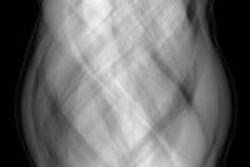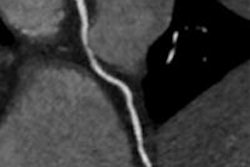Dear CT Insider,
Two just-published lung cancer screening studies in the New England Journal of Medicine affirm the value of CT for distinguishing benign from malignant lesions before opting for frequent repeat scans or invasive diagnostic procedures.
First, U.S. investigators poring through the results of the National Lung Screening Trial are saying that everything they hypothesized in earlier reports is panning out: notably, that annual screening is usually fast enough to catch malignancies in time to cure them, and that benign lesions would also reveal themselves over time by their lack of growth in subsequent screening rounds.
A second NEJM study, this time from Canada, looked at CT screening scans in thousands of subjects to determine which patient and nodule characteristics increased the odds of malignancy. Find out what both research teams discovered in this issue's Insider Exclusive, brought to you first as an Insider subscriber.
In other news, bismuth is well-known for its use in CT radiation shielding accessories, and it may be even better known as the active ingredient in a popular pink liquid medicine that soothes upset stomachs. But a Texas team is using the ultraheavy element to build a nanotube-based contrast agent to track stem cells in CT. The group's experiments in pigs confirm that bismuth's ultrabright attenuation properties are ideal for tracking tiny structures, in a report you'll find here.
In a somewhat troubling report from Taiwan, researchers have confirmed that patients undergoing repeat CT scans to monitor head and neck cancers have a much greater incidence of cataracts than the general public. Cataracts develop at lower radiation thresholds than previously thought, according to the study team, whose data indicate that a higher number of scans sharply increases the risk of cataract development. Find out how many scans it takes by clicking here.
On the plus side, technology not only continues to deliver lower radiation doses, it is enabling radiologists to make far better use of every voxel and every bit of radiation delivered to the patient. On that note, University of Maryland researchers are experimenting with interactive reconstruction of CT data. The process allows radiologists to zoom in on a small chunk of raw CT data, choose a highly specialized reconstruction technique that will help bring out the diagnosis, and quickly process it. The result: improved diagnostic accuracy and confidence, according to a story by senior editor Erik L. Ridley.
Multiple studies have shown that appropriateness criteria can starkly cut the number of inappropriate CT exams that are ordered. But it's not always the case, according to a report by associate editor Kate Madden Yee. Researchers in Texas took an emergency department under their wing to see if they could reduce the number of inappropriate CT pulmonary angiography exams. Unfortunately, ordering patterns didn't budge. Find out why physicians may be reluctant to change their ways by clicking here.
Clinicians have become accustomed to ordering creatinine tests before and after contrast-enhanced CT in patients at risk of kidney failure. But a funny thing happened to researchers in China, who have been seeing spikes in post-CT creatinine measurements even in patients who underwent noncontrast CT exams. Click here to learn more.
Last but certainly not least, the recent recommendation of lung cancer screening with CT by the powerful U.S. Preventive Services Task Force promises to be a game changer, as stakeholders work to define how screening will work, who will be screened, and when it might actually be implemented. We invite you to scroll down for more coverage right here in your CT Digital Community.




















